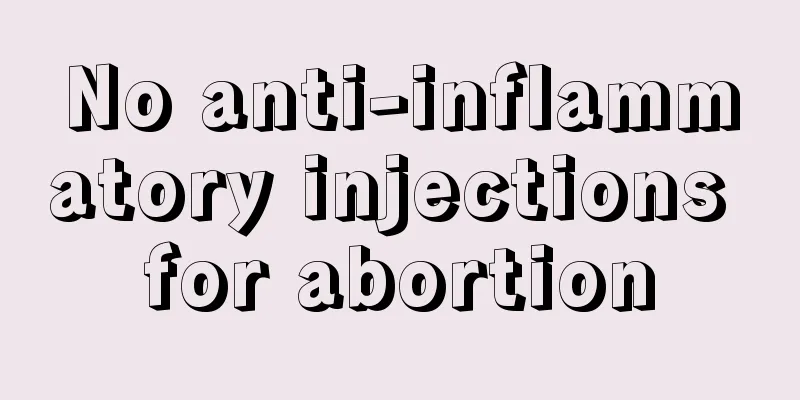How to prevent thrombosis in patients with PICC catheterization

|
At present, the development speed of my country's medical field is gradually accelerating, and more and more attention is paid to providing people with high-quality medical services. In the process of clinical treatment, more and more people are using PICC for patients with tumor chemotherapy and poor vascular conditions. However, the widespread use of PICC has also exposed corresponding problems, which can easily cause various complications in patients. The formation of thrombosis is a complication that seriously endangers health. In order to prevent thrombosis in patients after PICC catheterization, nursing staff should take effective prevention measures during clinical care, but there are still some who fail to realize the importance of preventing thrombosis, resulting in a decline in quality of life and a serious burden on patients' families. The following is a brief introduction and popularization of the relevant content of "How to prevent thrombosis in patients with PICC catheterization", hoping to provide a reference for improving the effect of thrombosis prevention in the future. 1. What are the symptoms of PICC catheter thrombosis? Because the veins are damaged, the probability of thrombosis increases, and the local temperature will be too high, causing local edema, which is the manifestation of thrombosis after PICC catheterization. It is undeniable that the swelling of the limbs and numbness of the upper limbs, especially after the patient's activities, the symptoms will worsen, and in severe cases, the phenomenon of restricted activities will occur. The skin temperature of the upper limbs was elevated during physical examination, and there were obvious changes in congestion. Under normal circumstances, the PICC catheter is generally left in place for a long time. This treatment method is mainly used for patients with tumor chemotherapy. In addition, it is used for patients with severe illness in the ICU. By establishing a very durable infusion channel, this method has both advantages and disadvantages. The disadvantage is that it can increase the possibility of thrombotic diseases, especially in patients with tumors who are extremely prone to thrombosis. Compared with ordinary people, the possibility of illness is relatively high. Placing a PICC catheter in the blood vessel will increase the risk and probability of illness to a certain extent. For intravenous catheters, it is a common foreign body in clinical practice, which will increase the rate of secondary thrombosis. In the actual treatment process, thrombolytic drugs are mainly used to provide effective treatment services for patients, and care should be taken after catheterization to prevent infection; the catheter should be sealed regularly to prevent the formation of thrombosis. Patients with malignant tumors need intravenous chemotherapy. If PICC catheters are not properly cared for during chemotherapy, complications are very likely to occur, and the hypercoagulable state of blood is very likely to cause thrombosis. In this case, the patient must calm down, go to the hospital for further examination, actively cooperate with treatment, actively accept anticoagulant treatment, and raise the limbs. The catheter should be removed if necessary. If the patient's various conditions cannot be removed, the PICC catheter needs to continue to be used. In this case, anticoagulant treatment should be fully carried out, and belly injections, anti-thrombotic low-molecular-weight heparin, and oral anticoagulants may also be required for a period of time. In either case, after the thrombus disappears, the hospital doctor will ask the patient to take oral anticoagulants for a period of time to prevent the formation or recurrence of thrombus. Especially for patients whose PICC catheters have not been removed, it is even more necessary to firmly use anticoagulant-related drugs during the indwelling period. If the patient's PICC catheter is removed, the tumor itself is also a group of people with high coagulation and high thrombosis risk, and it is also necessary to continue to fully anticoagulate for a period of time to prevent the formation and occurrence of thrombotic diseases, protect the patient's health, accurately improve the overall quality and final effect of the treatment work, and help the patient restore various body functions and health to the greatest extent. 2. How can patients with PICC catheters prevent thrombosis? ① Before providing PICC catheterization for patients, nursing staff must provide psychological care to make patients as relaxed as possible, eliminate negative emotions such as tension, fear, and anxiety, and prevent patients from promoting vascular spasm due to excessive tension. Generally, it is difficult for nursing staff to deliver the tube during puncture. In order to effectively prevent the occurrence of various symptoms, local anesthesia should be provided to patients to reduce the fear and pain of patients during puncture and achieve the purpose of improving the success rate of catheterization. ② In order to prevent the catheter from entering the patient's jugular vein by mistake, during the puncture and delivery of the catheter, the patient's upper limbs should be abducted as much as possible to make it 90 degrees with the body. When the head of the catheter reaches the patient's subclavian vein, the nursing staff will instruct the patient to turn his head 90 degrees to the puncture side and let the patient's lower jaw close to his shoulder. In addition, the nursing process should ensure gentle movements to prevent the patient's vascular endothelium from being damaged due to repeated punctures, otherwise it is very easy to induce and form thrombosis. ③ Nursing staff should have a strong sense of responsibility, such as strictly following aseptic operation procedures during the operation, using powder-free gloves, etc. If the gloves are made of talcum powder, the talcum powder must be carefully rinsed off, and the gloves should not touch the tube wall directly. ④ Provide targeted guidance services for patients after PICC catheterization. Nursing staff need to clearly inform patients that if they experience pain, soreness, or other discomfort in the limbs on the catheter side, they should report it to medical staff in a timely manner and handle it as soon as possible; carefully check and inspect intubated patients, and remind patients to pay special attention to avoid compression of the limbs on the intubation side; in winter, patients must keep warm and appropriately increase their hand activities on the intubation side, so as to better inhibit the formation of blood clots in patients. ⑤ If the patient is suspected of thrombosis after PICC catheterization, vascular angiography should be performed immediately, or Doppler ultrasound should be used to provide targeted examinations for the patient. After the diagnosis is confirmed, it is necessary to contact the vascular surgery department immediately, but the catheter should not be removed in a hurry. Instead, the thrombolytic drug should be directly applied to the patient's embolus through PICC catheterization, and the catheter should be removed while the thrombolysis is being performed. Even during the thrombolytic process, high-quality nursing services should be provided to the patient. During the thrombolytic process, symptomatic treatment should be given according to the actual situation. It can be seen that the probability of thrombosis in patients with PICC catheterization is relatively high. Nursing staff must provide targeted help and appropriately increase the prevention and treatment efforts to prevent problems that seriously affect the patient's quality of life. In fact, thrombosis after PICC catheterization is not terrible. What is terrible is the neglect of prevention. In order to further improve the prevention effect, nursing staff must actively assume their responsibilities and implement the various prevention measures summarized above to avoid serious threats to the patient's life safety. (Zheng Jue, the Sixth People's Hospital Affiliated to Shanghai Jiaotong University) |
<<: Special planning of the “Health from Food” series | Are food additives really not edible?
>>: "Healthy through eating" series | Is instant noodles "junk food"? Four misunderstandings to know
Recommend
Magnesium sulfate, a "one-drug-multiple-purposes" drug, is useful for both wet compresses and oral administration
Speaking of magnesium sulfate, I believe that obs...
What to do if the leucorrhea is clean at level 4
The cleanliness of leucorrhea is, to a certain ex...
What to do if there is a foreign object in the vagina
For friends who have foreign objects in the vagin...
Is it better to use baking soda or yeast for frying dough sticks? What are the requirements for frying dough sticks?
As we all know, fried dough sticks are a common t...
What to do if your menstrual flow decreases after abortion
Due to various reasons, female friends experience...
What causes thigh pain?
When women experience pain in the inner thigh roo...
The fastest way to pass gas during cesarean section
The best way for pregnant women to give birth is ...
How can skipping prevent ectopic pregnancy?
When it comes to ectopic pregnancy, we should all...
Where should I apply moxibustion if I don't have my period?
Irregular menstruation is a common physical probl...
What is bad for your health when you have your period?
Women should take special care of their bodies du...
What is breast peeling?
We all know that everyone has breasts. Both men a...
The reason why little girls have spots on their faces
The child is still young, and his skin should be ...
Don’t be afraid of spinal cord injury, there are ways to prevent it through rehabilitation
Don’t be afraid of spinal cord injury, there are ...
What to do if pregnant women have too many white blood cells
Perhaps due to incomplete information, in our imp...
What should I do if I want to have my period earlier?
Menstruation is what people often call the menstr...









